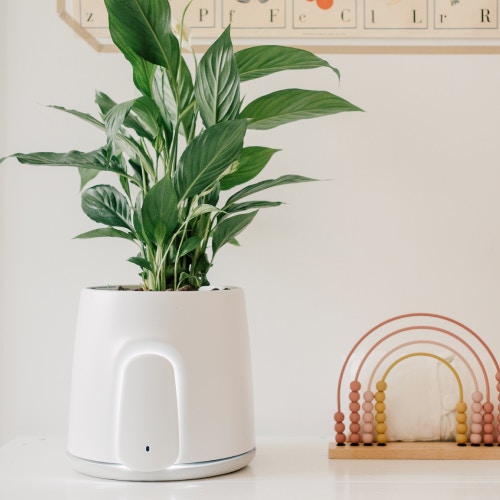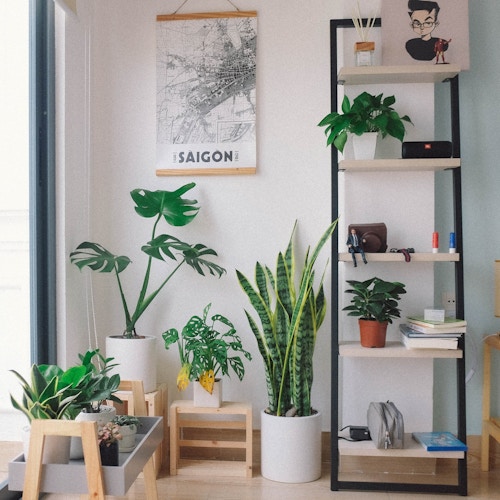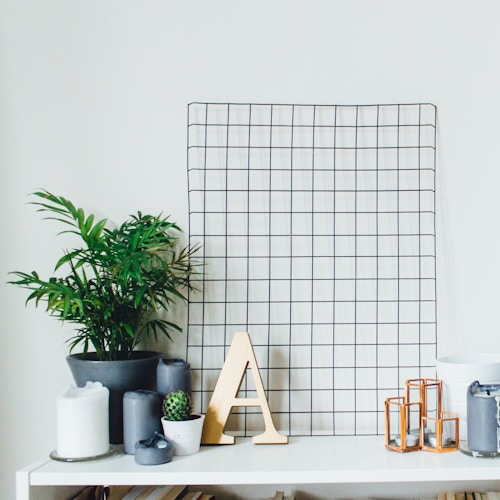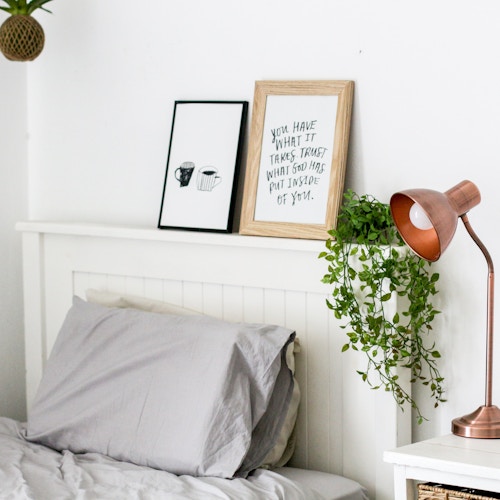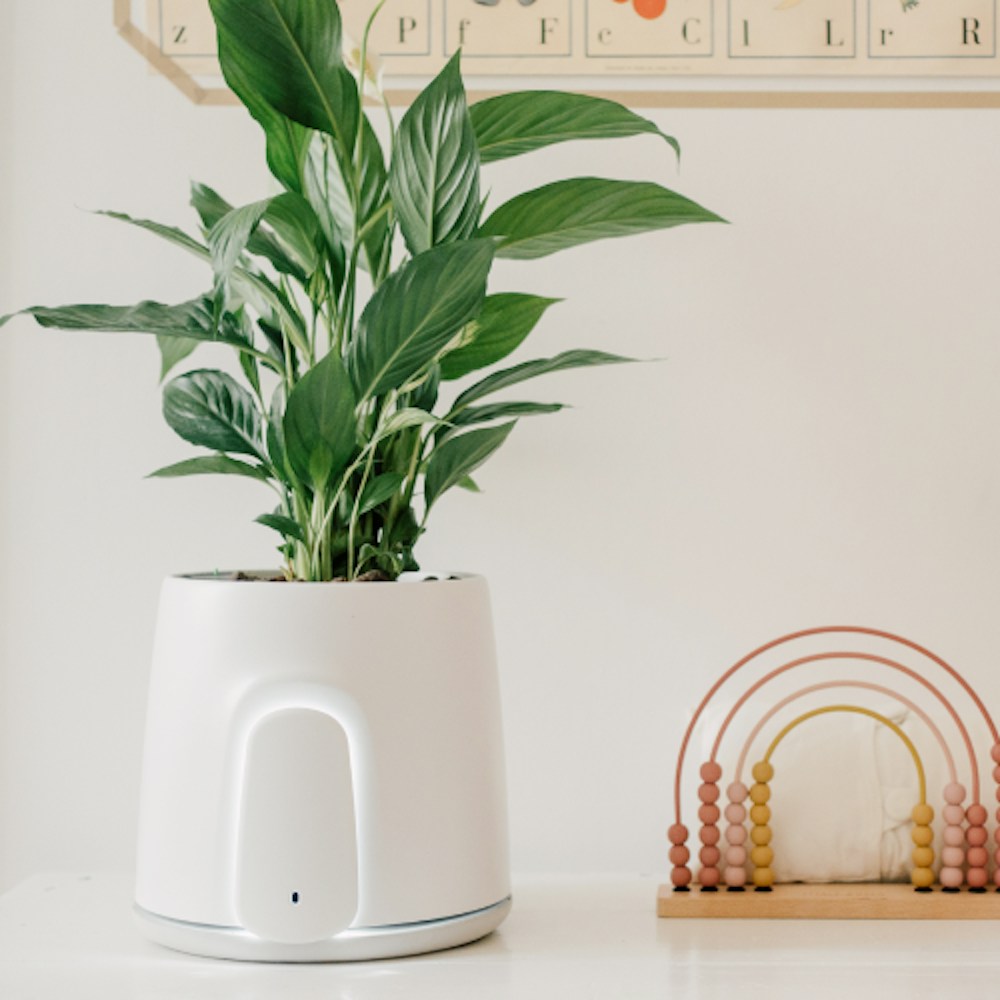
The ultimate plant care guide: all you need to know about Natede
→
Watering, light conditions, environment: the complete guide to make sure your plant is healthy and thriving in your Natede!
- Why plants purify your air
- Beginner guide to plants
- Plants’ light and water needs
- Why temperature and humidity are important for your plants
- Common health problems for indoor plants
- Best plants for your Natede air purifier
- Natede full guide
- Where to place your Natede
- How to water your plant
Why plants purify your air
We all know that plants help our air by producing oxygen and absorbing CO2, but not everyone knows some can do even more. NASA’s 1989 Clean Air Study showed that there are certain house plants that have the ability to purify indoor air from Volatile Organic Compounds, pollutants present in the air we breathe.
Here are the main pollutants that these plants are able to remove from the air:
- Ammonia (usually found in house cleaning products)
- Benzene (usually found in detergents and resins)
- Formaldehyde (usually found in furniture and house decor)
- Toluene (usually found in paints and dyes)
- Trichloroethylene (usually found in varnishes and inks)
We suggest you check out our blog post about the main pollutants hiding in your air to learn more on where they’re found and how you can eliminate them.
But how are plants able to do this? Thanks to a special ability called phytoremediation: harmful substances are retained inside the soil, where thanks to the presence of microorganisms near the roots they are broken down to become nourishment for the plant itself.

Beginner guide to plants
Taking care of a plant is no easy task, especially if you’re just getting started or you don’t have a green thumb. Let’s get through the essential elements to make sure you have all the basic information needed to properly grow your plant.
Plants’ light and water needs
Each plant has different requirements that need to be respected in order for it to grow and thrive. Adequate light conditions ensure that plants receive enough energy to grow and develop. Some plants thrive in direct sunlight while others prefer low-light environments, so it’s really important to evaluate your space’s characteristics before getting a plant to make sure the conditions are met.
The same goes for water: there are certain plants (like succulents) that don’t need much water to survive, while others need to be watered much more frequently to ensure their optimal growth and overall well-being. Water needs can also change throughout the year as seasons change and the environment in which the plant is placed changes as well. Keeping an eye on the soil and sticking a finger inside of it to check if it’s moist enough can help you measure if the plant needs water or if it’s already hydrated enough. Overwatering and underwatering are common issues which can easily be avoided, especially thanks to our Natede’s self-watering system!
Why temperature and humidity are important for your plants
Maintaining the proper temperature is crucial for plants because it influences the physiological and biochemical processes that are essential for their growth and survival. The most important thing to do is to make sure that the temperature does not fluctuate too much throughout the day, as this can cause stress to the plants that won’t develop as they should (this usually manifests through signs such as leaf loss and slower growth). For this reason it would also be better to keep the plant as far away as possible from heat sources and air conditioning, as well as air drafts.
Humidity is an important factor for plant health as well, and it’s a bit more difficult to provide. The main issue is that we spend most of the year keeping our environment dry with central heating in winter and air conditioner in summer, which is not the ideal condition for many plants. As suggested above, it would be better to avoid placing plants near these sources of air. Some tips to raise the humidity levels to create a more suitable environment for your plants is to mist them occasionally, keep them near each other or get a small humidifier to keep next to them.
Monitoring temperature and humidity levels with external tools can aid in ensuring your room is always in the best conditions to maintain your plants’ health.

Common health problems for indoor plants
Unfortunately, sometimes it can happen that your plant develops some health problems such as yellowing leaves, presence of bugs, or root rot.
Issues related to the leaves are usually caused by light conditions: if there’s too much direct sunlight they could yellow and burn; if they’re not getting enough sunlight on the other hand the leaves might appear paler or grow more slowly. This last situation could also occur if the plant is not getting enough nutrients, so an option would be to give it some fertilizer. Finally, don’t forget to dust the leaves of your plant with a damp cloth to ensure that photosynthesis can happen correctly.
If your plant starts to develop a strange smell, you see mold or the roots are rotting, you might be overwatering your plant: try to allow the soil to dry out between waterings and ensure proper drainage. If the opposite happens and your leaves start getting crispy, then you’re underwatering the plant. As we’ll see in the last section, this won’t be an issue with Natede’s self-watering system.
In the most unfortunate cases, there could be a fungal disease or pest infestation. These conditions should be monitored more closely and you might need to apply specific products. In the first situation (which could appear as white powdery spots on leaves, black or brown spots), it would be better to improve air circulation and remove the affected parts, and use specific fungicides if necessary. As for the pest infestations, usually manifested through small holes in the leaves or by the presence of insects, it’s important to isolate the affected plant, use insecticidal soap and keep the situation monitored to make sure they’re permanently eliminated.
Best plants for your Natede air purifier
We’ve collected all the essential information in this table, so you can remove all your plant doubts! Other than light and water, which we’ve already mentioned, if you have cats or dogs at home it’s also important to check if your plant is pet friendly as some plants when ingested can be toxic for your pet.

Vitesy’s favorite plant is hands down snake plant: beautiful to look at and really easy to keep alive, even if you don’t have a green thumb!
Natede full guide
Now that we’ve covered everything about the plants, it’s time to take a closer look at how Natede itself works and how to get the best out of it.
Where to place your Natede
The best location to position your Natede is the place where there is the correct amount of light for the specific plant you’ve selected. In this way you can make sure that your plant is thriving and it’s not missing anything!
If you have the Smart version, we also suggest taking these small precautions so that the sensors’ readings can be as accurate as possible: avoid placing the device near air currents (such as windows and entry doors) or near areas directly affected by the sun or other heat sources. It would also be best to place your Natede at least 1m (39.5 in) away from the nearest wall and at a height of about 1.5m (59 in) above the floor.
How to water your plant
Natede has a special self-watering system that helps you take care of your plant, so that you don’t have to constantly worry about watering it! Thanks to the 1L water tank and the ropes placed under the vase, your plant will automatically absorb the perfect amount of water it needs to thrive.
You can fill the self-watering system pausing every few seconds to allow the floater to rise and show the correct water level. When the red line becomes visible the tank is completely full. Be careful to not pour too much water or too fast in order to avoid any water getting into the electric components. When the floater is completely down, then it’s time to refill it!
We suggest watering the plant directly from the soil once in a while to make sure all the soil is moist, especially if you see that your plant is particularly dry and needs a little more water.

We’ve reached the end of this full guide, but if you have any more questions you can contact our customer service at support@vitesy.com or check out our FAQ section. The only thing left to do now is to choose your favorite plant and get a Natede!
